Introduction
- Some studies suggest that paper consumption continues to grow unabatedly with severe environmental impacts (Georgesku, Tugui and Dumitriu, 2008).
- The use of paper has created modern business bureaucracy, but paper is also an important instrument for critical business agreements.
- Most offices have excess papers.
- Technologies continue to show that businesses can abandon papers.
- Industry professionals predicted ‘the paperless office’ in 1970s.
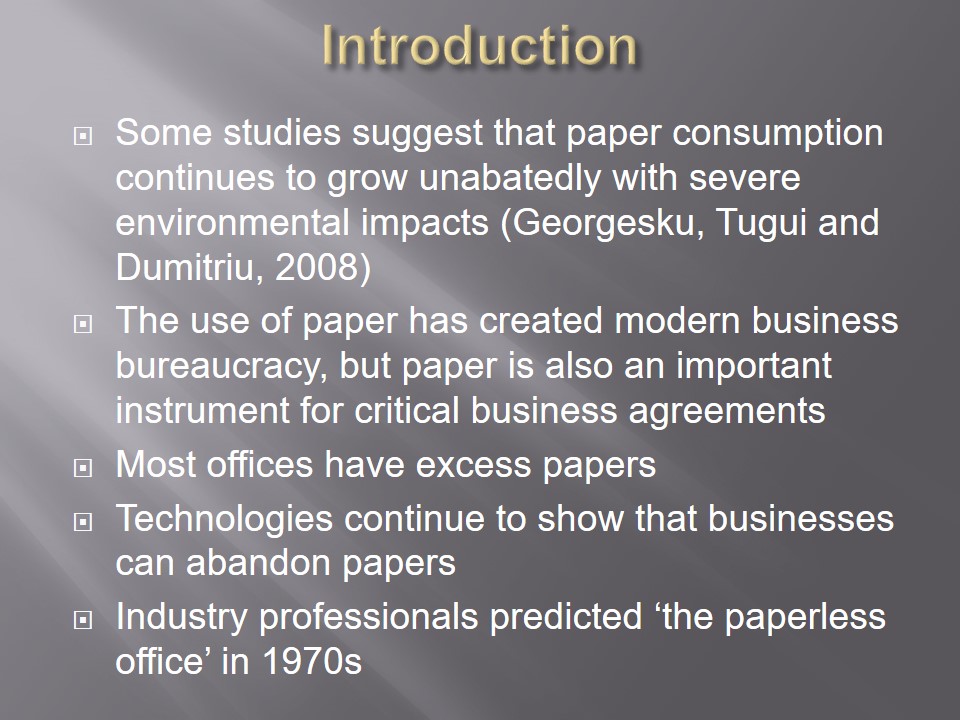
Some facts about paper usages?
- An average office person uses 10000 sheets of copy paper every year.
- The USA consumes over 30% of the world’s paper.
- More than 40% of wood pulp is used in paper production.
- It costs the US over $25-35B in filing, storing, and retrieving paper every year.
- On average, people can copy a document up to 9 times.
- Over 5% of paper documents get lost and 7.5% are misfiled.
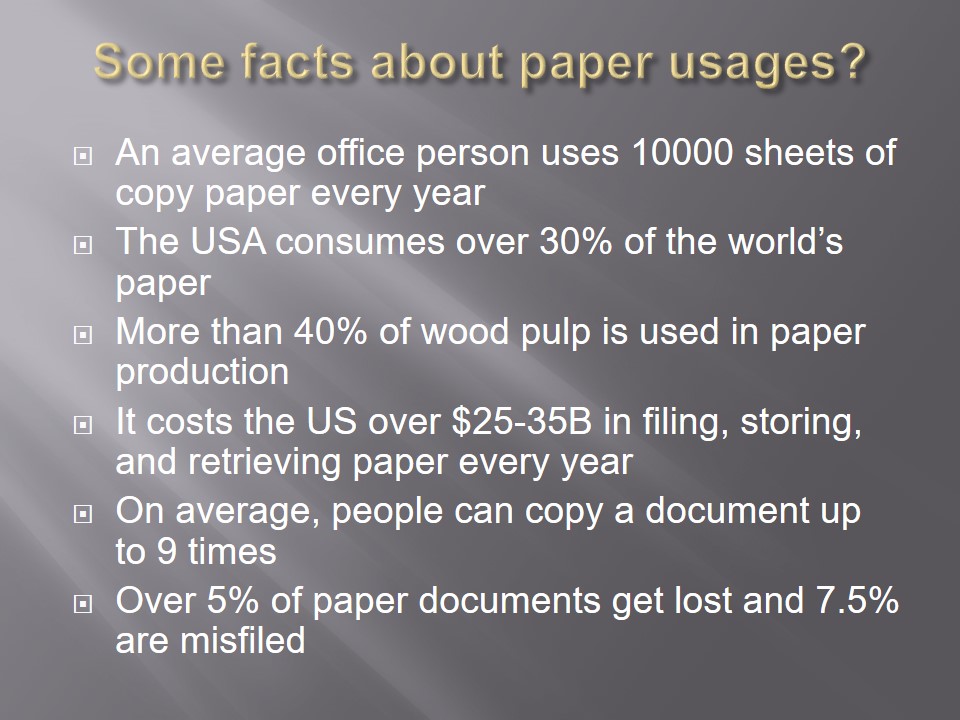
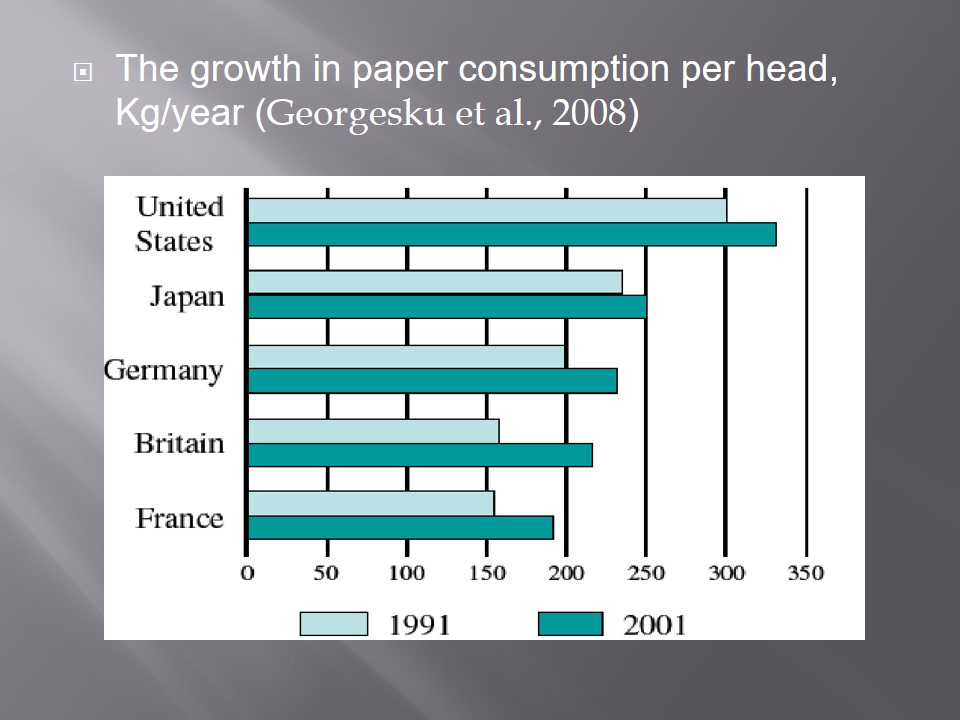
Challenges of going paperless
- Maintaining a paperless office is expensive.
- Electronic communications require both parties to have relevant software and hardware.
- Most business communications with partners and individual are still paper-based.
- Possible costs and loss of productivity when going paperless.
- Inability to adopt change policies may hinder the process.
- Technological challenges, particularly compatible software, file format, and system stability.
- Lack of appropriate skills to use new technologies for paperless office.
- Some uses of paper will never disappear.
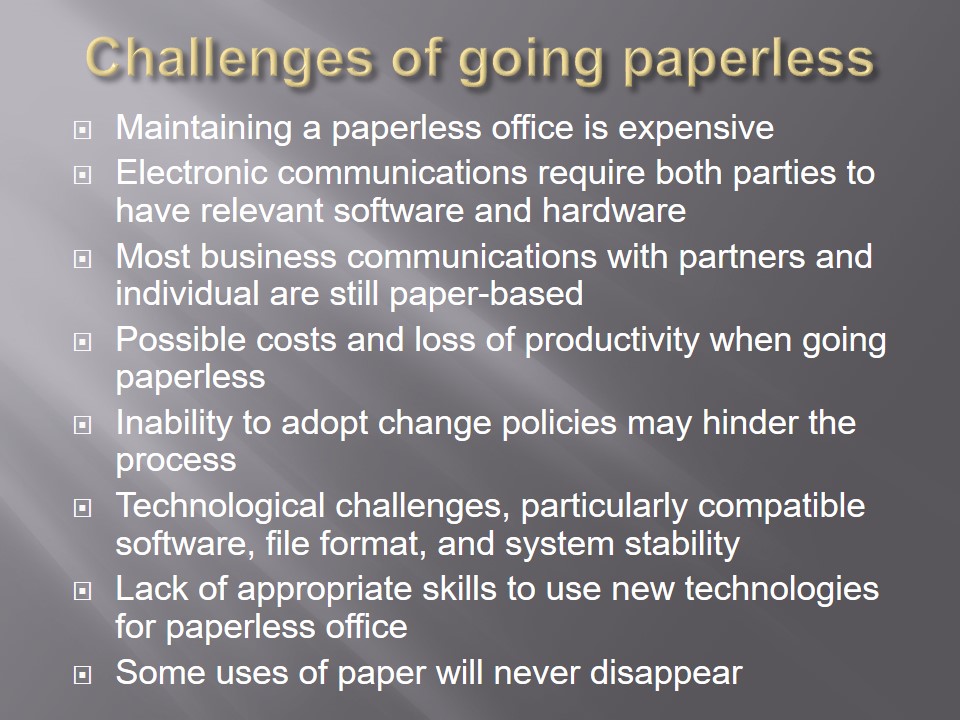
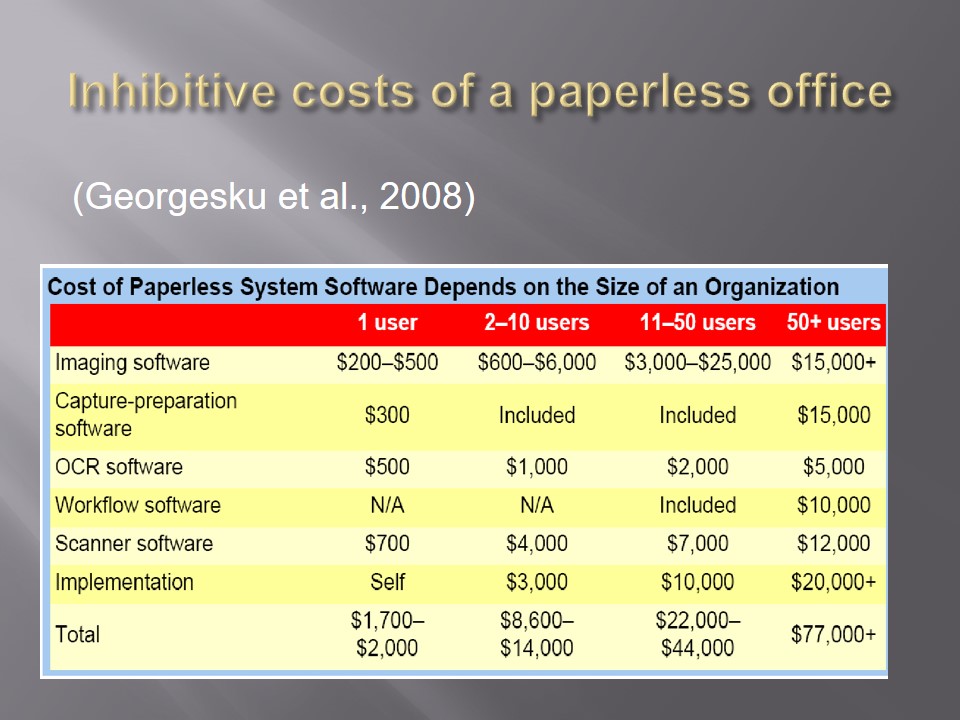
Benefits of paperless office
- Most documents are already in electronic formats.
- It will reduce costs of printing, filing, paper production, shipping.
- It saves the environment.
- Availability of office space for other uses.
- Enhanced staff productivity.
- It saves time on filing, locating, and retrieving paper documents.
- Therefore, employees should adopt paperless office and realize these benefits.
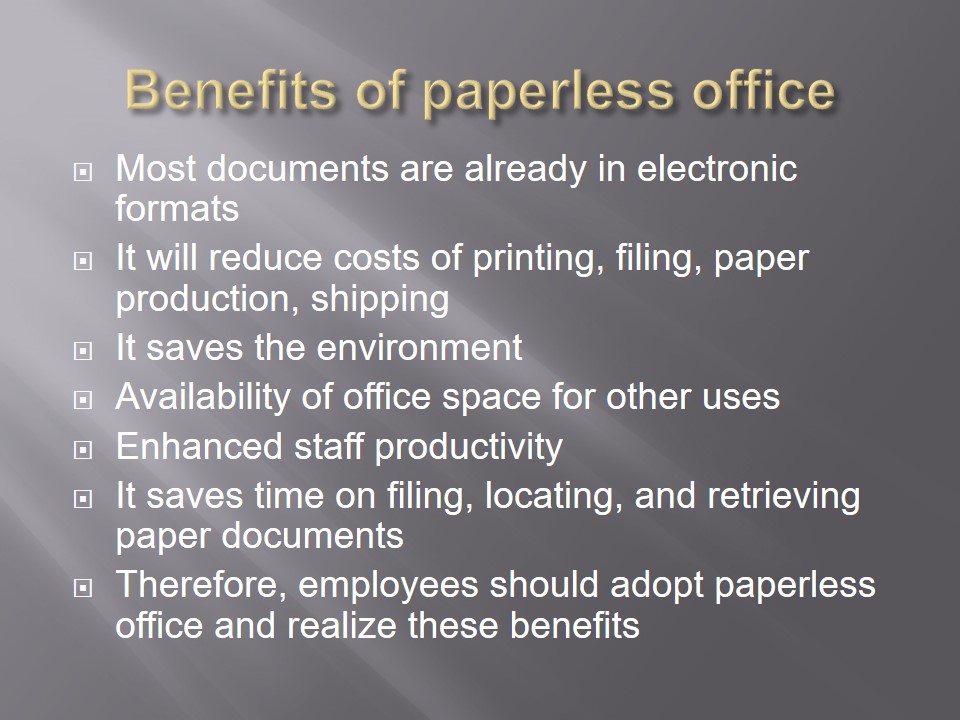
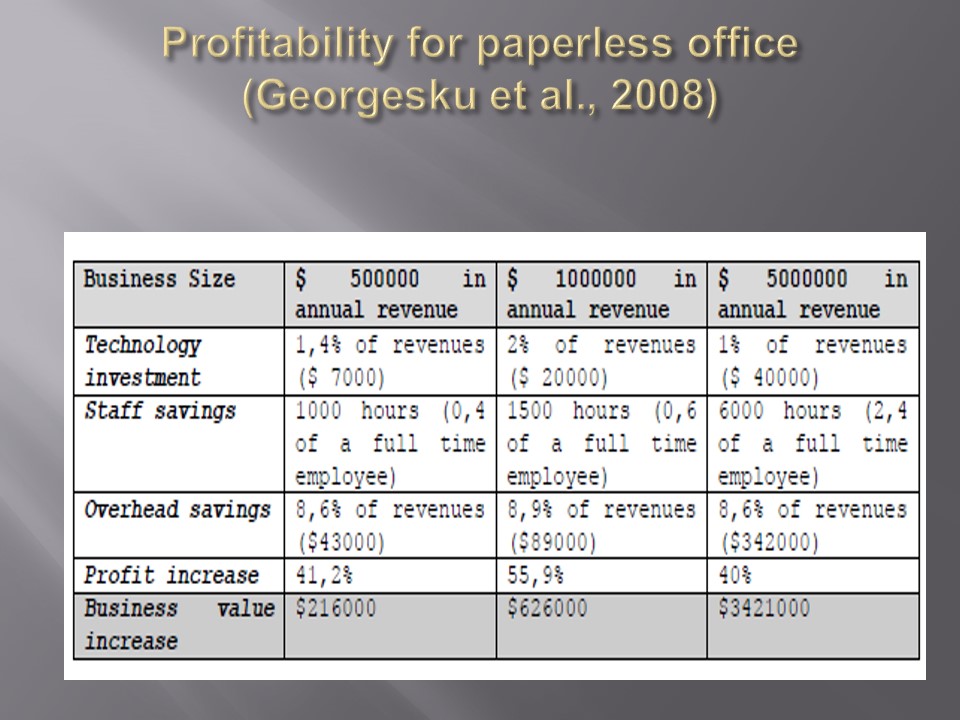
Reference
Georgesku, M., Tugui, A., and Dumitriu, F. (2008). Challenges For The Quality Of Information In The Paperless Office. Web.